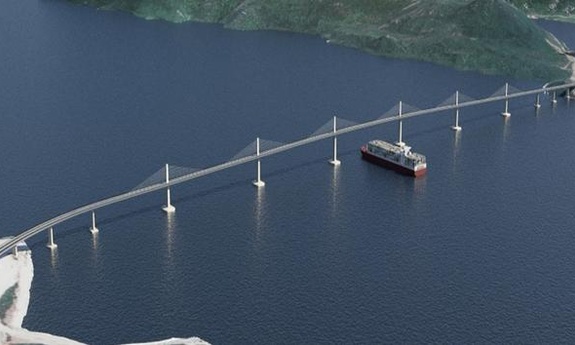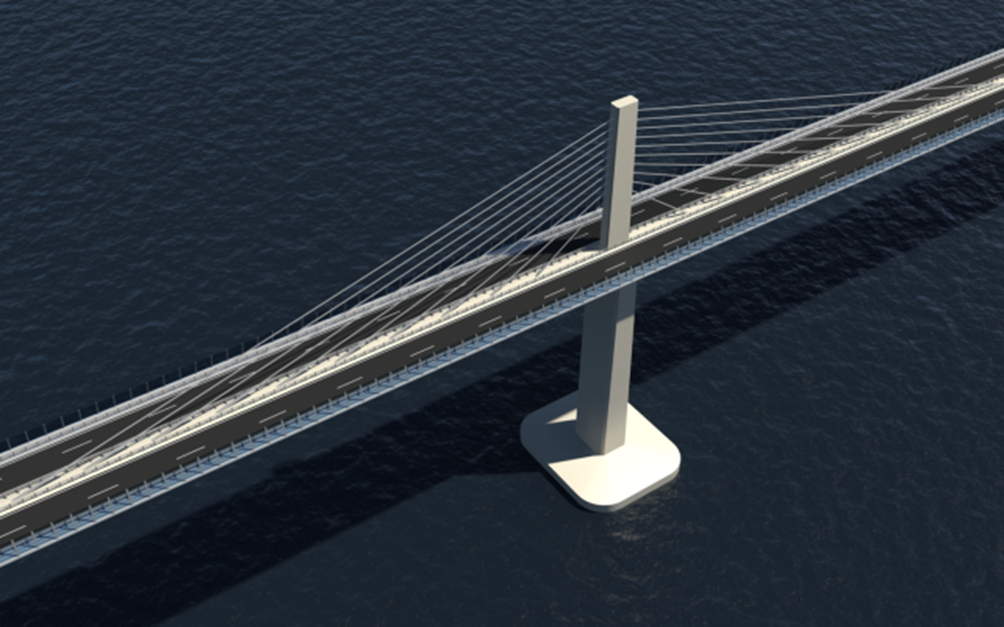Pelješac bridge with approaching roads and tunnels
Pelješac Bridge is the planned bridge in Croatia, intended to connect the Croatian peninsula of Pelješac, and through it the southernmost part of Croatia including Dubrovnik, with the Croatian mainland, avoiding crossing Bosnia and Herzegovina at the Neum Corridor in order to enable direct connection of Croatian territory.
The development of the sea crossing from land to Pelješac peninsula is being planned since 2003 and over years’ different bridge options have been discussed and investigated through the design and feasibility studies. So far mostly bridge options have been investigated and a solution finalized on the level of final design and a construction permission has been required for issue for the bridge shape in the length of 2.440 m.
The location of the bridge has required high vertical alignment of 50 m that allows biggest ships to enter the Mali Ston bay where the port of Neum in Bosnia is located. Geological conditions on this location are asking for deep piles foundation as after 25 m of water depth there are 80 m deep sediments of sand and clay before the sound limestone is found. Beside difficult foundations the bridge location is exposed to strongest influences of seismic activity, wind and temperature in the whole Croatia.
Fig.1 Pelješac Bridge
Pelješac Bridge is set, said Oleg Butković, Minister of Maritime Affairs, Transport and Infrastructure, a week ago at the press conference in order to announce opening of the tender for a contractor of the construction of the Pelješac bridge. Financing of the project is planned to be provided partly from EU funds and other part from state budget. Croatia has sent an application to the European Commission for co-financing of the project to build the Pelješac bridge, and while waiting for the expected decision, the tender for its construction is open. The competition is divided into two stages. The first stage involves checking the technical, business and financial capacity of all registered contractors. It will last 60 days and registered contractors who pass the check will be able to thrive in the second stage, where they will present their offer - said Tomislav Tolušić, Minister of Regional Development and EU Funds, adding that the contractor will be chosen according to the principle of economic viability. According to announcements, the contractors name should be known by the end of the year, and the construction will start next year. A large number of applications is expected and it is also it is likely to expect that domestic companies will be applying in a consortium with strong foreign companies. The total investment amounts to 426 million EUR, and Croatia the has requested co-financing of 79 percent from the European Commission. This means that Croatia will spend all that money on a single project. Minister Tolušić doesn’t see this as a problem. Neither I nor minister Butković don’t want to waste time and wait for a project preparation and to eventually lose money. That's why we go to the full funding of the Pelješac bridge, "says on. According to unofficial information, it is not disputable that the European Commission approved co-financing the construction of the Pelješac bridge and access roads. The only question is the amount.
Fig.2 Pelješac Bridge
Decision on co-financing will be known in six months, a minister Butković said that nothing can stop the construction of the bridge. The construction of the Pelješac bridge will be implemented in four phases, the first involving the construction of access roads. The second phase is the construction of the bridge, then road construction on the bridge and at the end of the construction of the so-called Ston ring road. It is expected that construction will be completed in 2020. The story of the Pelješac bridge is completed on a procedural plan and now we turn to the implementation of the project – said minister Tolušić.


















































